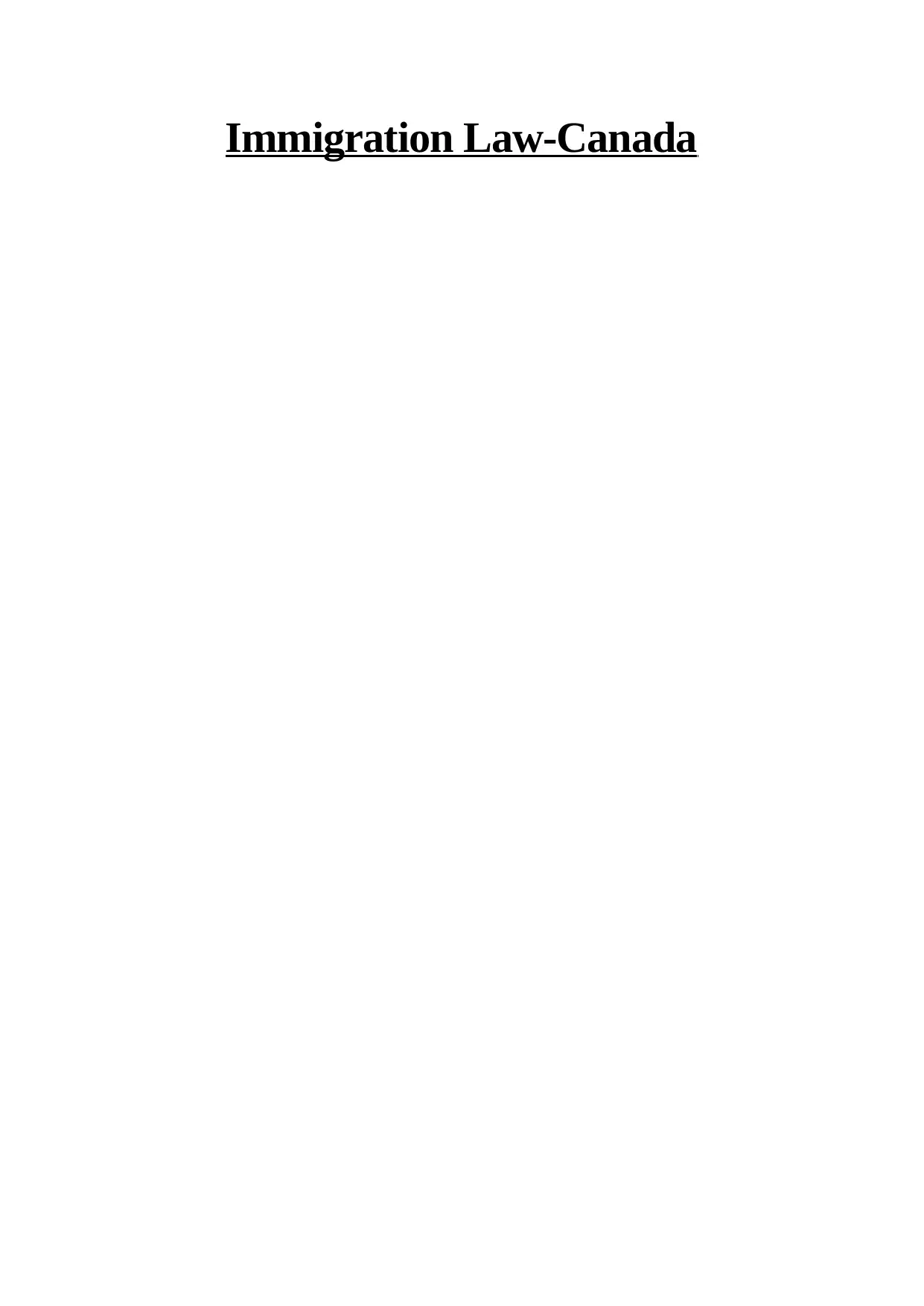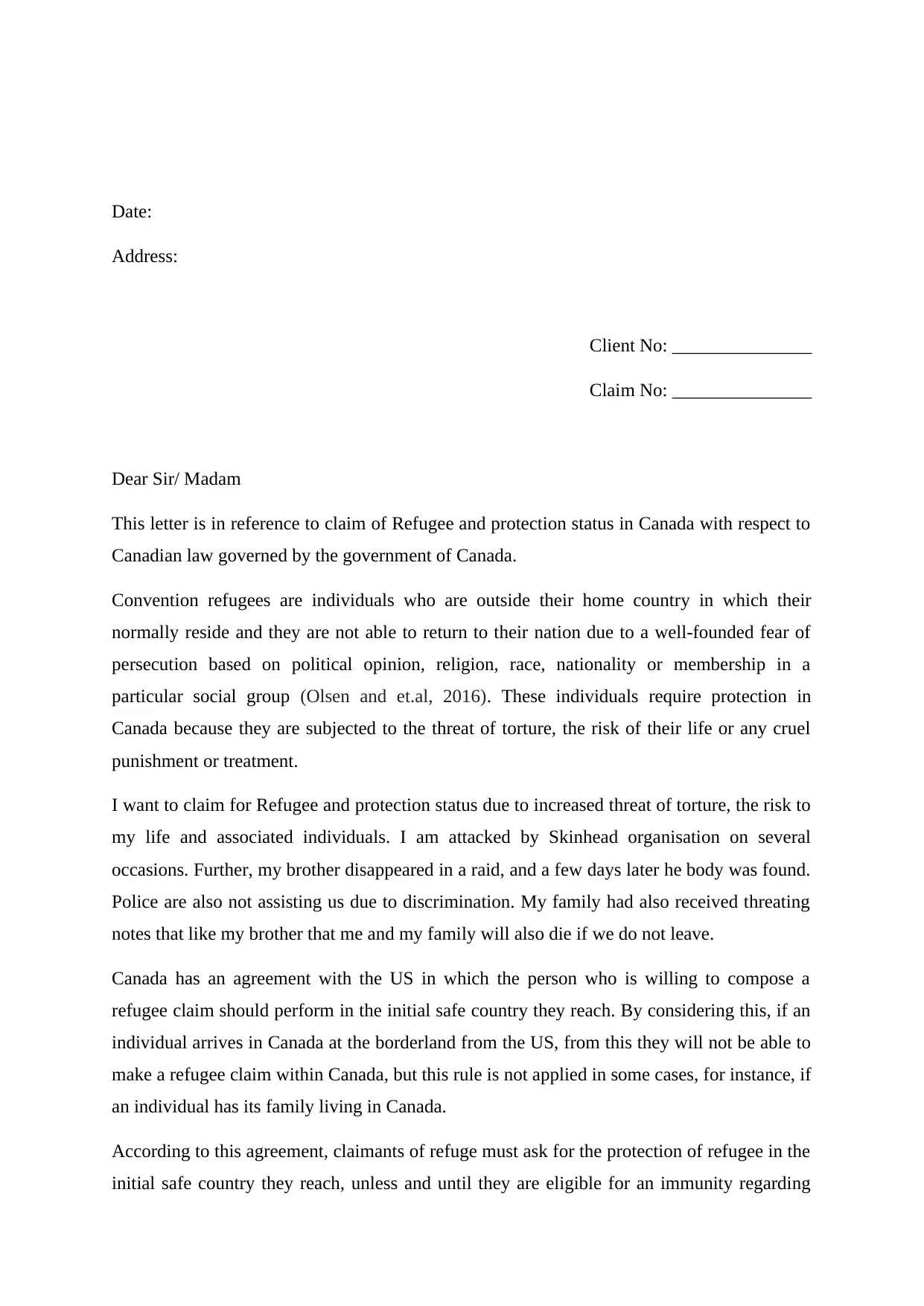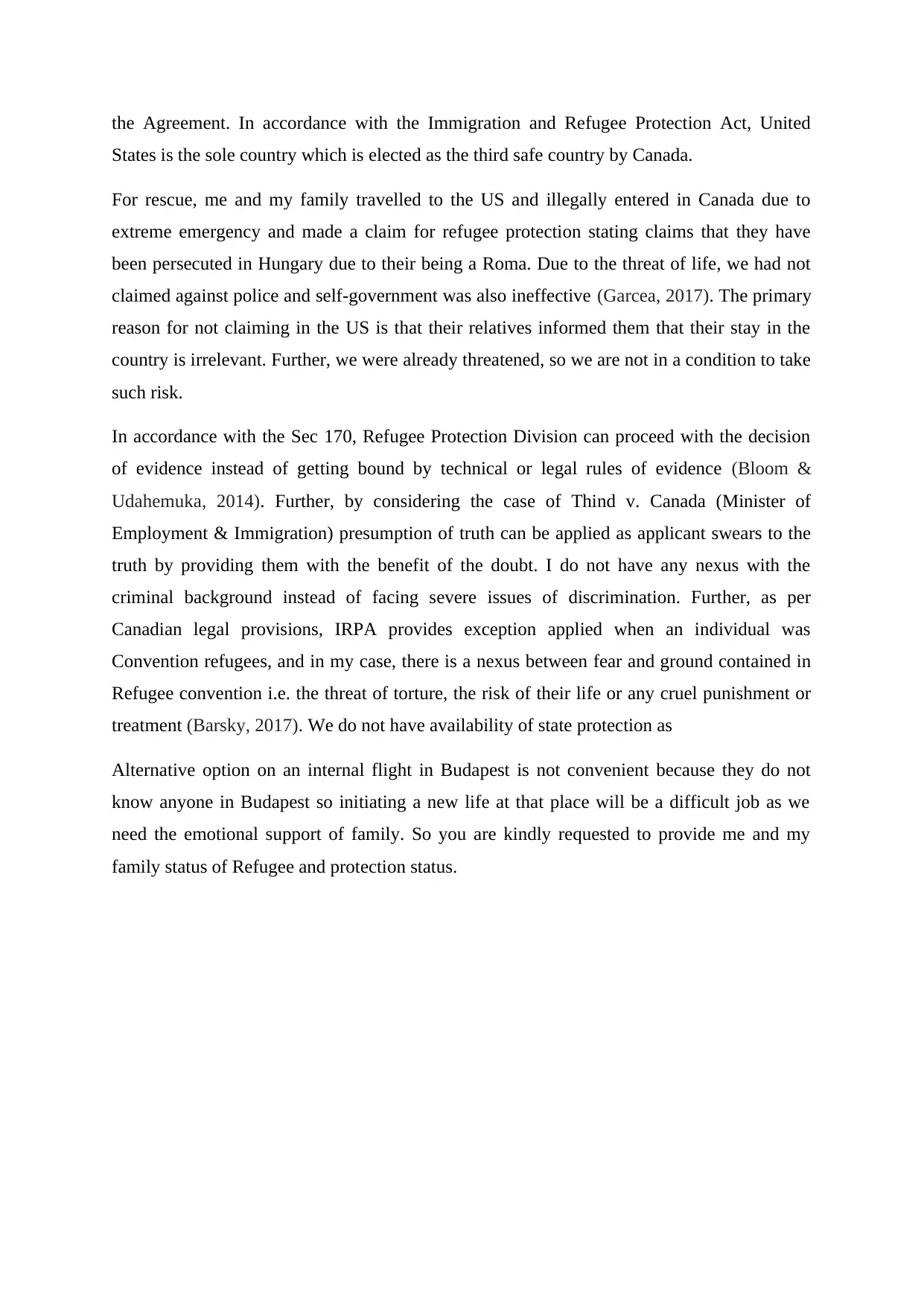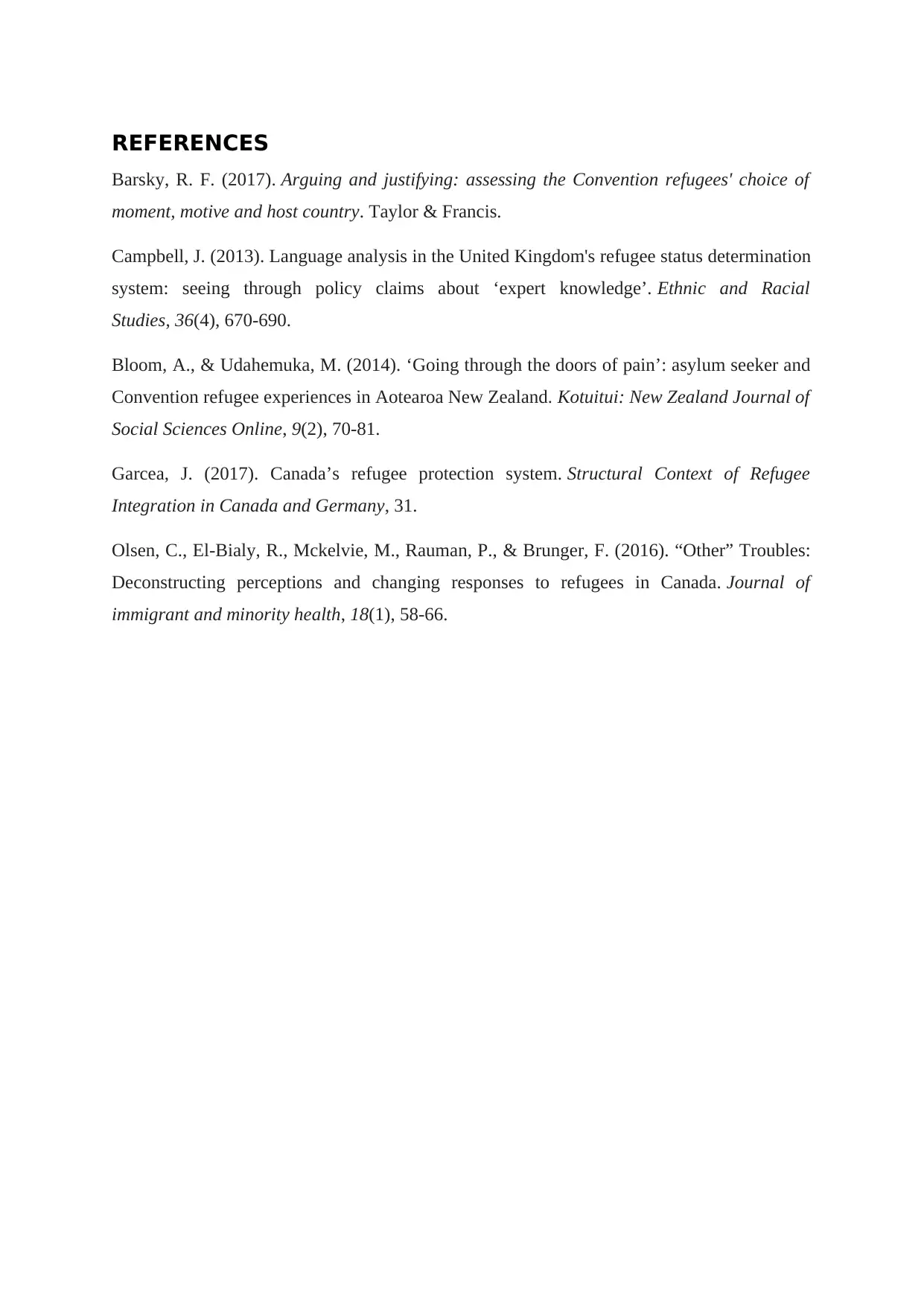Canadian Immigration Law: Case Analysis of Refugee Protection Claim
VerifiedAdded on 2020/03/04
|4
|897
|51
Case Study
AI Summary
This case study examines a claim for refugee and protection status in Canada, focusing on the legal framework governing immigration and refugee protection. The claimant, facing persecution and threats in their home country, seeks refuge in Canada. The document analyzes the application of Canadian law, including the Immigration and Refugee Protection Act (IRPA), and the implications of the Safe Third Country Agreement with the United States. It addresses the claimant's reasons for not initially seeking protection in the US, the relevance of the claimant's experiences, and the application of legal precedents. The analysis considers the claimant's fear of persecution, lack of state protection, and the potential application of exceptions under the IRPA. The case explores the claimant's arguments, supporting evidence, and the importance of providing a safe haven for those facing threats to their lives, highlighting the complexities of refugee claims and the need for compassionate and just immigration policies. The case concludes with a request for refugee and protection status for the claimant and their family.
1 out of 4











![[object Object]](/_next/static/media/star-bottom.7253800d.svg)